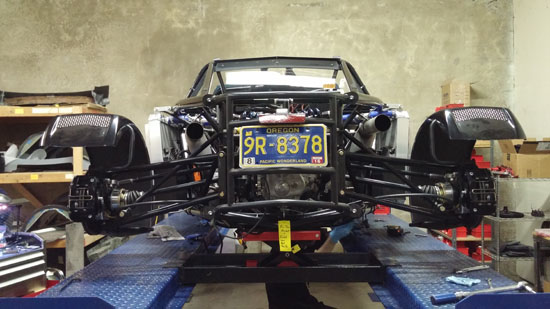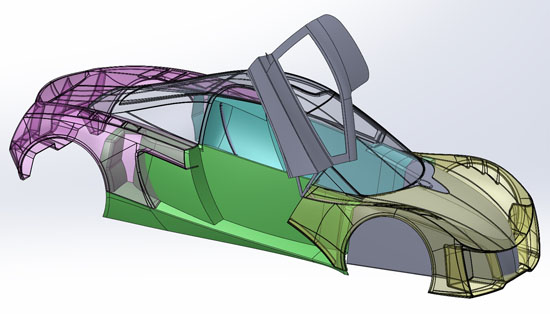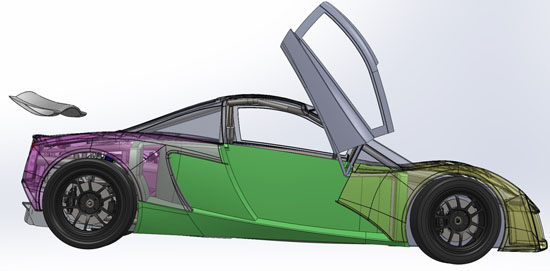The detail design of the bodywork is finally done. I’ll do a separate post next week when I have some renders. There are also many exciting discussions, more on that when definitive agreements are reached. Relationship building is yet another full time job that I get to do 🙂 It’s fun but demanding and involves a steep learning curve. Just like all my other jobs.
In the meantime, we’ve been getting ready for the testing at ORP tomorrow (among hundreds of other things of course). There are several goals for the day: set baseline peformance for D2 on street tires, then move up to older R compounds we have and test that, which will prepare us for the transition to Hoosier A7s when they show up. We have also made changes to front suspension geometry that we want to try out. Another goal is for Jonathan to really start pushing the car and get more comfortable with it in preparation for jumping into the supercharged race version.
One prerequisite for this is an upgrade of our demo to drysump lubrication. The car was mostly taken apart for this (good time to do other maintenance like clutch, fluids, oil analysis, caliper rebuild and so on). Now it’s back together.




Tomorrow’s test is just the start. It will give us valuable data that we can use to gauge progress, and progress will be made. One item we’re working on is upgrading the brakes. One might not think that brakes are important when climbing a mountain, but experience has shown that they are. Very.
So the plan is to upgrade both rotors and calipers. Weight will be about the same but performance should step up quite a bit.



I’ll be machining new hats and caliper brackets this weekend, after we get back.
There is lots more I hope to announce soon but need to finalize some things first.

























